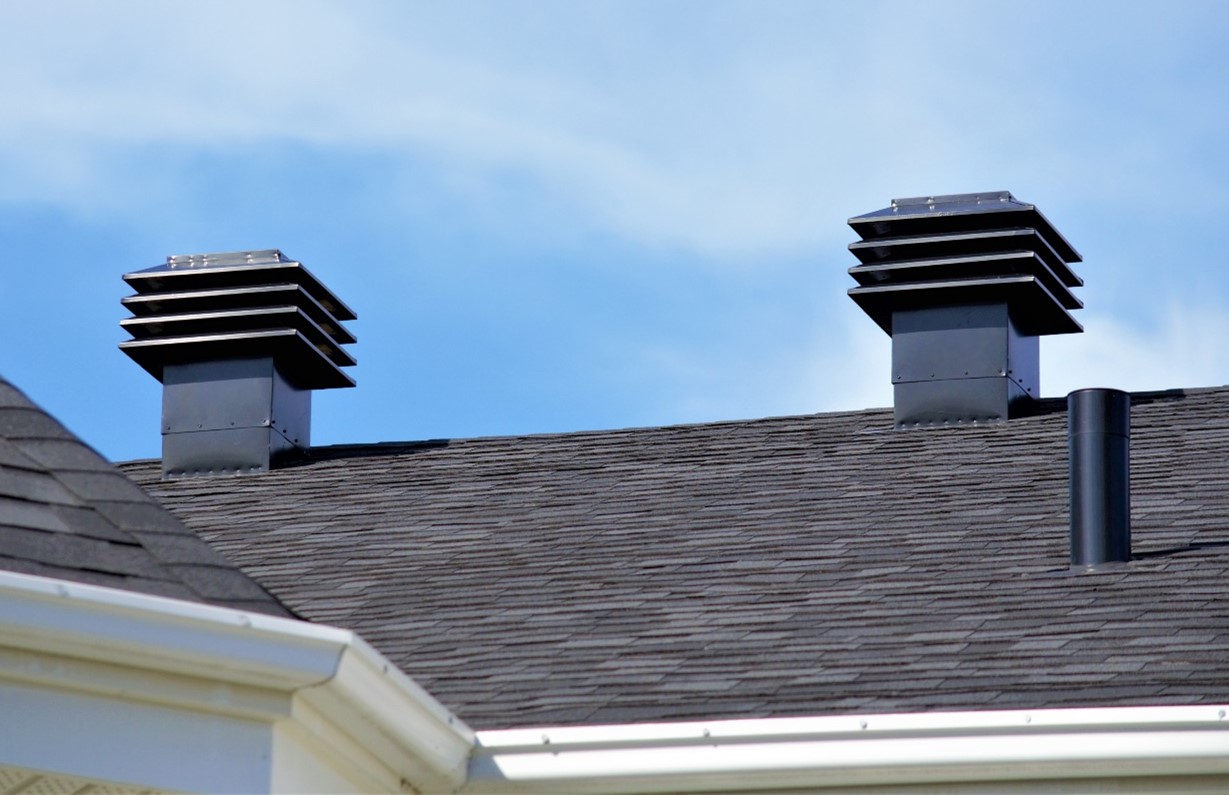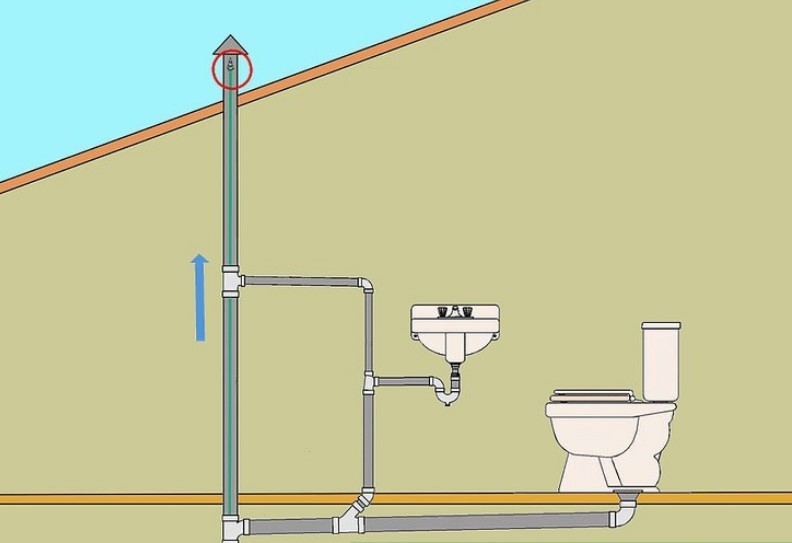The Significance of Ventilation in Building Plumbing Systems
The Significance of Ventilation in Building Plumbing Systems
Blog Article
We've unearthed the article pertaining to Essential Plumbing Vent Pipes: Understanding Their Role down the page on the internet and believe it made perfect sense to relate it with you on this page.

Proper ventilation in plumbing systems is commonly neglected, yet it is crucial for maintaining the functionality and safety and security of your home's pipes. Air flow assists control air pressure, prevent the buildup of harmful gases, and make certain the effective elimination of waste. In this guide, we will check out the importance of proper pipes air flow, just how it works, and the advantages it brings to your pipes system.
Comprehending Ventilation in Pipes
Air flow in plumbing refers to the network of pipes that allow air to stream through the drainage system. These vents offer multiple functions, consisting of managing air pressure within the pipelines, protecting against sewage system gases from going into the home, and helping in the smooth circulation of wastewater.
Exactly How Air Flow Works in Pipes Systems
Air Pressure Law
Proper air flow keeps balanced air pressure within the pipes system. When water moves via pipelines, it displaces air. Without ample air flow, this displacement can develop negative stress, leading to reduce drains or siphoning of water from traps, which can cause undesirable odors to permeate into the home.
Preventing Drain Gas Buildup
Among one of the most critical features of plumbing vents is to avoid sewer gases, such as methane and hydrogen sulfide, from accumulating within the home. These gases can position serious health risks and are very combustible. Vent pipelines allow these gases to run away securely outside.
Helping in Waste Removal
Air flow assists in the efficient removal of wastewater by protecting against airlocks in the water drainage system. When air can move easily via the vents, it allows water and waste to move smoothly via the pipes, reducing the threat of obstructions and backups.
Kinds Of Plumbing Vents
Main Heap Vent
The major stack vent, also referred to as the air vent stack, is the main vent in a pipes system. It expands from the main drainpipe line up through the roofing system, allowing gases to get away and fresh air to go into the system.
Branch Vent
Branch vents connect to the major stack air vent and offer specific components, such as sinks, toilets, and showers. These vents make certain that each component has adequate ventilation to function properly.
Air Admittance Valve (AAV).
An Air Admittance Shutoff (AAV) is a one-way shutoff that enables air to get in the pipes system without the need for a conventional vent pipeline extending via the roofing. AAVs are typically used in renovations or areas where setting up a common air vent is not practical.
Indicators of Poor Air Flow in Pipes.
Slow Draining Fixtures.
If your sinks, tubs, or toilets are draining gradually, maybe an indicator of bad ventilation. Poor air circulation can produce a vacuum effect, making it tough for water to drain effectively.
Gurgling Appears.
Gurgling audios coming from drains pipes are commonly a result of air being drawn through water traps due to negative stress in the pipelines. This is a clear sign of inadequate air flow.
Unpleasant Smells.
Sewer odors inside your home are a warning that your plumbing system is not effectively aerated. This could indicate that sewage system gases are not being effectively vented outside, causing possibly unsafe conditions.
Common Ventilation Mistakes.
Inadequate Vent Sizing.
Making use of undersized air vent pipelines can lead to bad air flow and stress inequalities in the system. It's important to utilize vents that satisfy the particular needs of your pipes system.
Improper Vent Placement.
Putting vents too much from the fixtures they serve can reduce their performance. Appropriate placement ensures that air can stream freely and successfully with the system.
Ignoring Code Demands.
Building codes give details guidelines for pipes air flow. Neglecting these codes can cause a system that fails to operate correctly and might cause pricey repairs or health hazards.
Benefits of Appropriate Ventilation.
Enhanced System Effectiveness.
Appropriately ventilated plumbing systems operate extra effectively, with fewer clogs, faster draining, and much less strain on the pipes. This effectiveness prolongs the life expectancy of the plumbing system.
Improved Air High Quality.
By stopping sewage system gases from entering your home, correct air flow contributes to better indoor air top quality, making your living setting healthier and much more comfortable.
Protecting Against Water Damages.
Ample ventilation helps protect against water from being siphoned out of traps, which can lead to sewage system gases going into the home and causing water damages in time.
Actions to Make Sure Correct Ventilation.
Consulting Plumbing Codes.
Always consult local pipes codes when developing or customizing your plumbing system. These codes offer the needed standards for appropriate airing vent and guarantee your system meets safety and security standards.
Routine Examination and Upkeep.
Regular evaluations can assist determine possible air flow concerns prior to they come to be significant troubles. Upkeep jobs, such as cleansing vent pipes and checking for blockages, are important for keeping the system in good working order.
Professional Installation.
For brand-new installments or major adjustments, it's wise to work with an expert plumbing professional. They have the proficiency to make certain the air flow system is appropriately developed and installed according to code.
Conclusion.
Appropriate air flow is a vital part of any kind of pipes system, making sure that it functions successfully and securely. By comprehending the importance of air flow, recognizing the indications of inadequate air flow, and taking steps to keep your system, you can prevent costly problems and shield your home's air top quality.
4 Things You Should Know About Your Plumbing Vents
What Plumbing Vents Are
Also called a vent stack, a plumbing vent is a vertical pipe attached to your drain line that runs through your roof. The plumbing vent pipe, or plumbing air vent, removes gas and odors from your plumbing system and allows fresh air to enter the pipes, helping the water to flow out of the drain pipes.
What Plumbing Vents Do
Plumbing vents have two basic functions. One of which is to allow unpleasant smelling wastewater and sewer gasses to escape your plumbing system instead of entering your home. Plumbing vent pipes are typically located on roofs, away from windows, to ensure the fumes exit the home completely.
The other function of the plumbing vent is to move fresh air into your plumbing system. This helps move water through every plumbing fixture in your house, like toilets and sink drains. Think of the way in which you need to let a little air into the bottle as you pour soda in order to make the drink flow smoothly.
Different Types of Plumbing Vents
True vent: This is the most common vent option. In simplest terms, a true vent is a vertical pipe attached to your drain line that exits through the roof. They often function as the main vent that other fixtures can connect to. Re-vent pipe or auxiliary vent: Attached to the drain line near specific plumbing fixtures, re-vent pipes run up and over to connect to the main vent. Common vent: Two plumbing fixtures installed on opposite sides of a wall are typically tied into the vent stack using something known as a sanitary cross. Wet vent: This venting option operates as a drain pipe and a vent at the same time. Wet vent drainage systems drain water from one fixture while venting the air from another. Although they’ve been used for over 100 years, wet vent systems have only recently been added to the plumbing code in many areas. If you’re planning on installing one in a bathroom remodel, make sure you check your local code prior to construction. Loop vent: For free-standing fixtures like kitchen island sinks, loop vents are ideal. These vent pipes run under the floor, rise from the P-trap, and create a loop inside the cabinet sink. Air admittance valve: An AAV is a one-way mechanical valve typically installed at the site of the plumbing fixture. AAVs allow venting to occur without having to tie into a larger venting system. They’re ideal for venting fixtures where you aren’t able to easily connect to an existing vent system. Common Plumbing Vent Issues
Although vent pipes typically don’t have water flowing through them, they’re still subject to many typical plumbing issues. For example, clogs are one of the most common problems associated with sewer vent pipes. If your vent pipe gets clogged, all of your plumbing fixtures tied into the vent stack will be affected.
A sink with a slow drain that bubbles and gurgles or a strong sewage smell around your toilet are both indicators that your toilet vent pipe is clogged. Because most vent pipes exit through the roof, old leaves, twigs or even a bird’s nest could be clogging the pipe.
Clogs in your vent pipe system cause a buildup of negative pressure, meaning that water won’t be able to flow out of your home very well. It’s similar to putting your finger over the opening of a straw to trap water inside. When you remove your finger, the water is able to flow out of the straw.
If you suspect you have any blockage in your vent, make sure you have a professional come examine the situation. Left unchecked, a blocked air vent can lead to other costly repairs, like leaks and sediment buildup.
Under Pressure
Pipe vents are essential aspects of a home’s plumbing system. Owning a home means learning about all sorts of things you never put much thought into before. But by understanding as much as you can about the important systems of your home, you can keep those budgets intact and those anxiety levels low.
https://www.homeserve.com/en-us/blog/home-improvement/plumbing-vents/

We hope you enjoyed our article about What Are Plumbing Vents and Why Are They Important?. Many thanks for finding the time to read through our content. For those who enjoyed our blog posting please consider to pass it around. We truly appreciate your readership.
Learn More Report this page